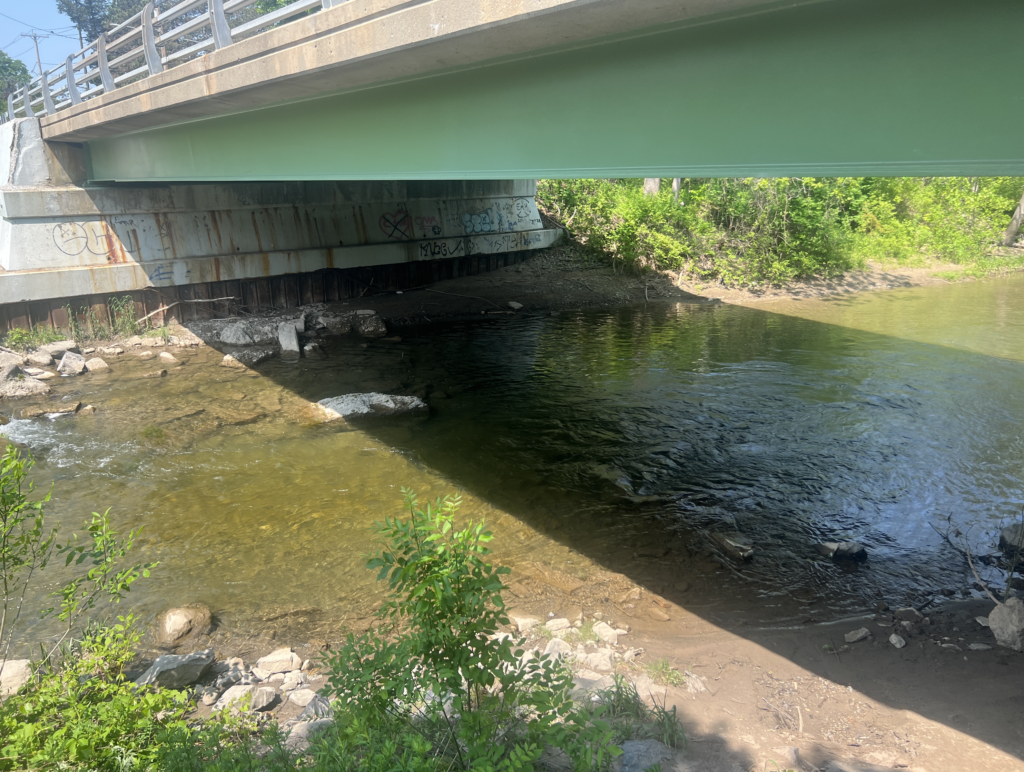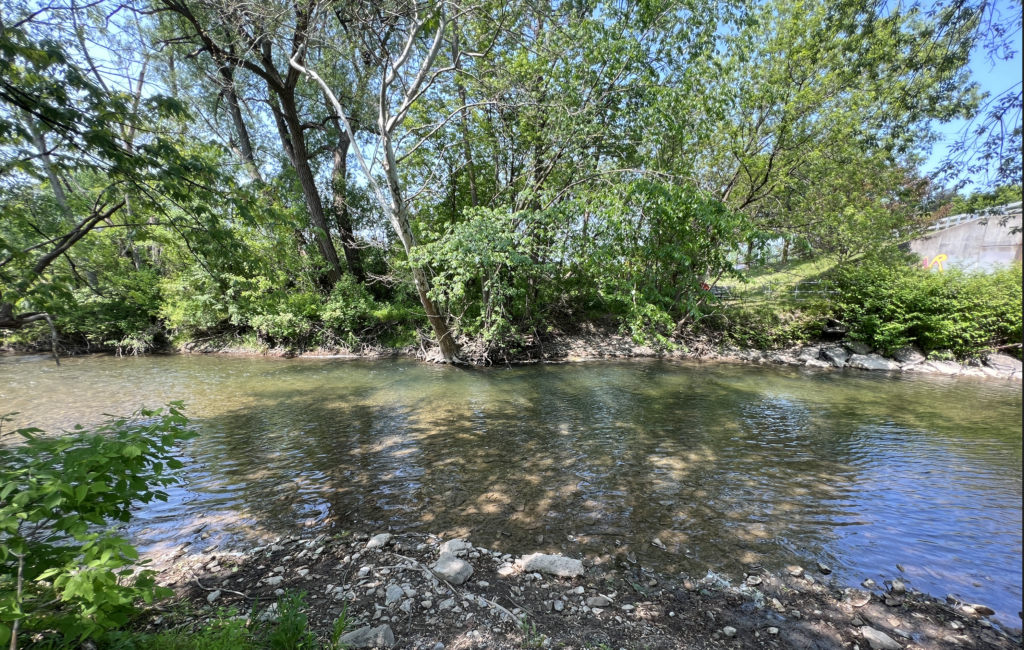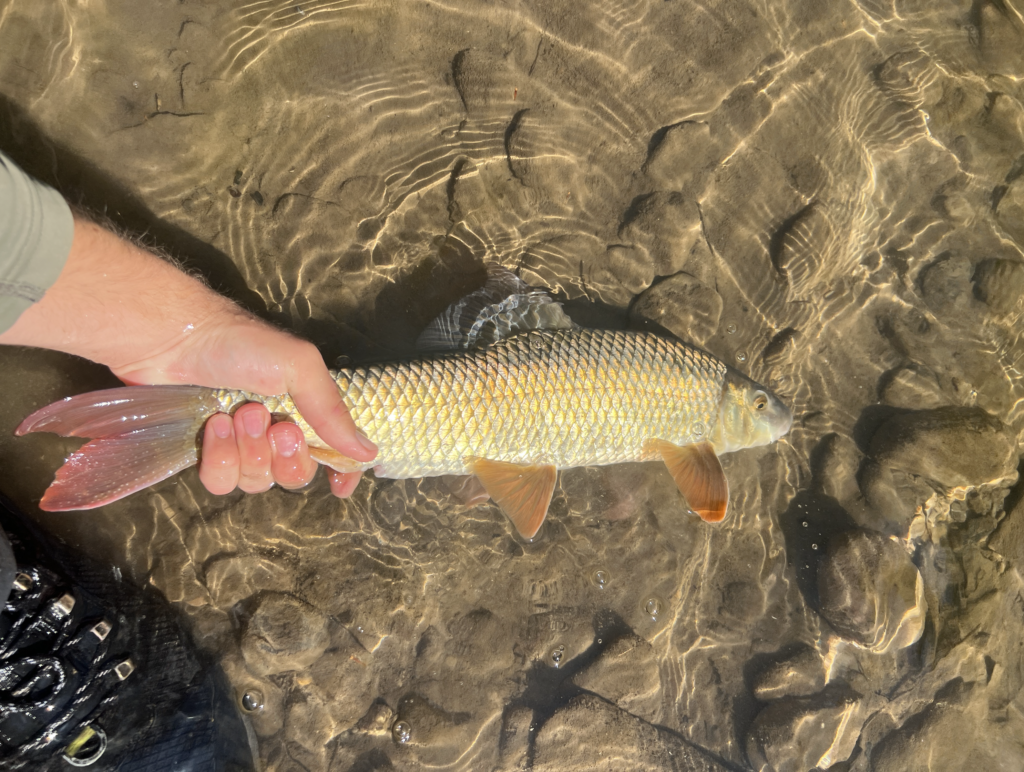
New York Regional Session Four- Limestone Creek
This is part three of the New York regional series. Click here to read about session one, here for session two, and here for session three.
Limestone creek was my least favorite venue in the competition. The section we fished was mostly fresh stocked brown trout, and they were not distributed very evenly. I controlled the first session on this venue, so I was able to gain a bit of insight into what was working. The angler I judged caught the majority of his fish on cream colored mops. They were heavily podded up, with almost all of his fish coming from two holes. I figured I would start with a similar approach.
My beat began under a bridge and extended about two hundred yards upstream. There was some good water right at the bridge, then fifty or so yards of shallow flat before it came to a big run under a sycamore tree. When I talked with my teammate who had controlled the beat, he said this water under the tree was probably my best and was what I should focus on the most. Above that there was one deep run on the left bank and then the tail of a nice run at the top. My other teammate fished the beat above mine the day before and caught fifty fish from the run at the bottom of his beat. The tailout of that run is what bled into the top of my beat, so I hoped a few of those fish were in there as well.

I threw on the same rig as the last three sessions (T&T Contact II 10’9” 2wt, 0.18mm tricolored Sempe material leader, four feet of 6x Cortland tippet off a stopper knot) and tied on a 3.5mm cream mop. The bottom of my beat was a near stagnant pool on the near side and a shallow rip the rest of the way across. It didn’t appear to be great holding water so I started in the run at the top end of the bridge. My second drift near a large rock ended ended with a small brown flying into the net. I made a few more casts to it, then sent one into the run on the far side. Immediately I missed a fish, but then made up for it on the next cast by landing a small but scorable wild brown. I pushed out into the middle of the river and began fishing upstream. One more fish came from the head of the run before I ran out of water to fish there, but I was feeling good with three fish on the board in ten minutes.

While walking my beat before the session I’d spotted two fish holding in the tail of the sycamore run where it shallowed out under the second bridge. I ran up to that area to tried and sight fish them, but couldn’t find them again. I moved on, making quick drifts through the more marginal water. When I got to the deeper area around the tree, I began getting into fish. The low hanging branches made it hard to make good casts, so I dropped to my knees to get below them. On my first pass with the cream mop I pulled five stocked browns and one nice sized wild fish. Sadly, I also dropped two or three that could have really helped me out.
While I was camped out on the best part of the run, I decided to change to a 3.5mm tag nymph once the action dried up on the mop. I caught a solid wild fish on the first cast but didn’t have any love after that. I switched back to the cream mop and continued on, picking up another fish at the head.
When I got to the top of the run I decided to return to the bottom and fish back through it with a chartreuse mop. Since the run was on the faster side I upsized to a 4mm bead to slow the drift as well. I figured since they were mostly stocked fish I could probably pick up a few more trout with this slight change. This turned out to be the right move, and I landed four more and two big red horse suckers (which sadly didn’t count) on my second pass.

I decided to rest the run for a bit and check out the next half of my beat. When I got to the next hole I changed to a 4mm cream mop and ran a handful of drifts right off the bank. Though this spot had looked good when I was walking the beat, upon closer inspection it was extremely turbulent and offered few places for fish to hold. After giving it a solid three minutes and hurried on to the run near the top.
I had high hopes of getting into at least a few fish in the tailout, but it didn’t pan out. I made a handful of casts but didn’t touch or even see a fish while I was there. The fish probably abandoned this run as fast as they could after all the pressure the previous day; that’s what I would have done!
I realized the majority of my fish were likely in the run under the sycamore, and I needed to capitalize on that water. I ran back down to the bottom of the run and decided to try a double nymph rig with a 4mm pheasant tail and a 4mm turd stone to really scrape the bottom. The change put one fish in the net, but I was a bit out of practice with a heavy double rig like that. The low hanging branches did me in pretty quickly. I re-rigged the double rig, but broke off again and decided to abandon it. I went to a single heavy stone and picked up another trout and a white sucker (which also didn’t count).

With about fifteen minutes left I decided to give the run a short rest and return to the the bridge for a few minutes. I ran back to the bottom and threw the chartruse mop on, which brought another stocked brown out from next to the large rock. I continued up and had what felt like another eat or two, but could have very well have been bottom. Once I covered the most likely spots, I bolted back up to the sycamore run to finish out the last four or five minutes. I got into position to fish the best part and made drift after drift through it, adding in slight variations in speed and action to each. I landed one more fish a bit before the buzzer, finishing out with nineteen fish.
When we all reconvened at the parking lot, I learned another angler had also caught nineteen. Sadly, his fish were a bit bigger and I ended up with a two for the session. That one hurt a bit, because I had dropped and missed more fish than usual in that session. I had no good excuse for not landing just one more.
I’m happy with the way I approached the beat. It could have been easy to get sucked into wasting way more time in the top half than I did. I’m glad I made the call to abandon it after a fairly brief check. While talking with my controller after the session, he told me the majority of his fish actually came from the small pocket of frog water under the bridge, and from the flat in between the bridge and tree run. He primarily sight fished them with a dry dropper and smaller nymphs. This came as a huge surprise to me, since I didn’t mark any fish in these areas. He agreed that they had moved in between sessions and seemed to mostly push into the tree run, since during his session he’d only found five fish there compared to my fifteen. This was definitely one of the most extreme reactions to angler pressure I’ve seen over such a short period.
I also feel pretty good about my choice of flies and drifts. I certainly had enough eats to take a one. Capitalizing on those eats is where I feel like I really dropped the ball here. Looking back I know that I was off my game and making mistakes I shouldn’t have. I think this was do to a combination of things, but was mostly a result of being caught up in my poor performance in the previous session. Usually I can move past a bad session like that pretty easily, but I let that one get to me. I definitely felt the results of the more negative mindset I let myself slip into, which just goes to show how important it is to have a short memory in competition. If I’d steadied myself a little more and managed to land one of the fish that I lost, I would’ve ended up on the podium. Overall, I’m happy with how the comp turned out, and I’m walking away with a number of things to continue working on. I want to offer a big congratulations to the medalists Zac Carter, Ken Crane, and Michael Bradley, as well as a thank you to Ken for putting on a great competition!
Thanks for following this series through! For more information on Team USA Fly Fishing, visit their website here. If you’re interested in getting your feet wet (pun intended) in competitive fly fishing, you can find a list of upcoming competitions on Flycomps.com.
